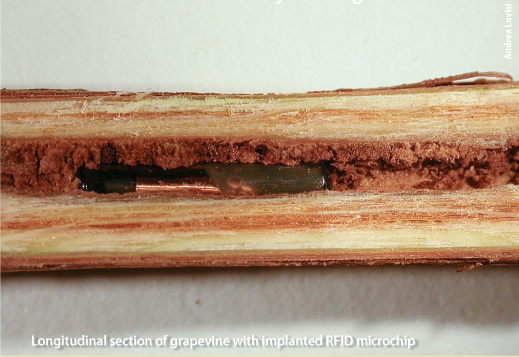All Issues
COMING UP in California Agriculture
Publication Information
California Agriculture 66(2):76-76.
Published online April 01, 2012
PDF | Citation | Permissions
Full text
Uses of microchips in plants include product traceback, breeding and certification
Billions of microchips have been sold globally since the 1940s. As microchips become smaller, more powerful and less expensive, this technology is finding its way into crop agriculture. Microchips will most likely be implanted in valuable woody perennials such as grapevines, and fruit and nut trees. Radio-frequency identification (RFID) technology — coupled with scanners and computer, mobile and Web applications — can provide an instant link between specific plants and databases on pest and disease management, agrochemical use, irrigation and other agronomic factors. In turn, this information can serve a range of uses, from sanitary certification and breeding to geographic positioning, regulatory compliance, risk management, thievery prevention and product traceback for food safety. In the next issue of California Agriculture journal, researchers review potential applications of electronic identification technology in agriculture and their practical implications for growers.





